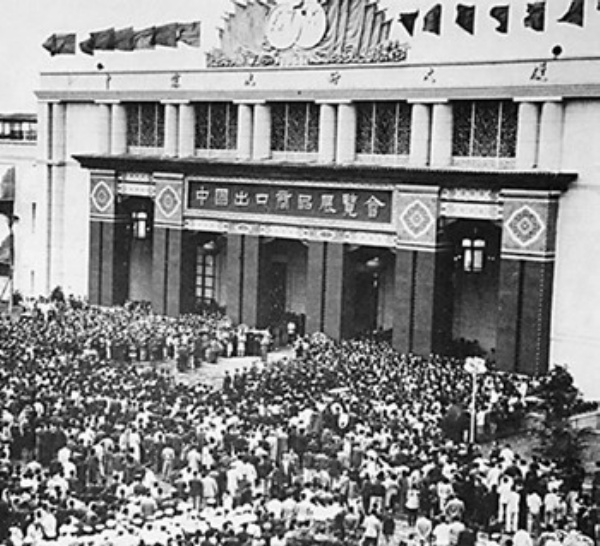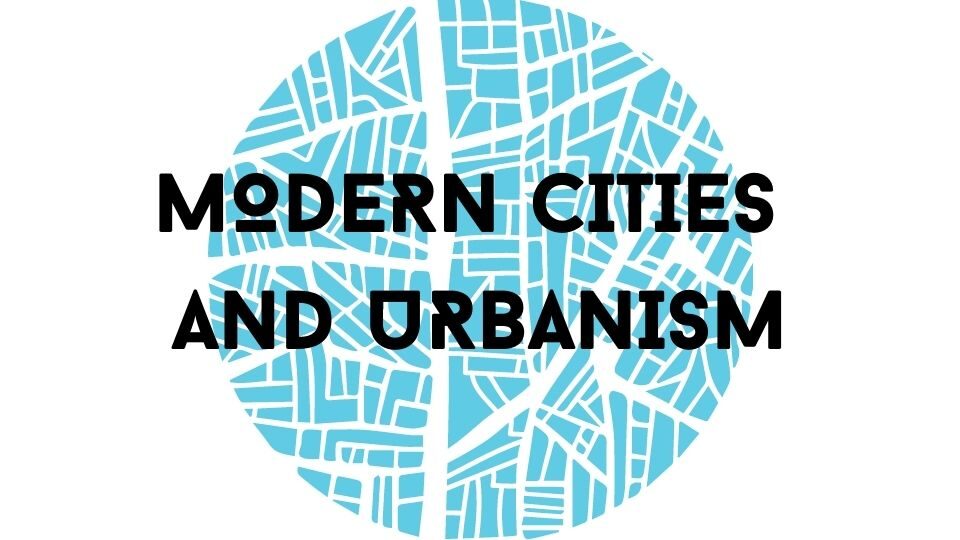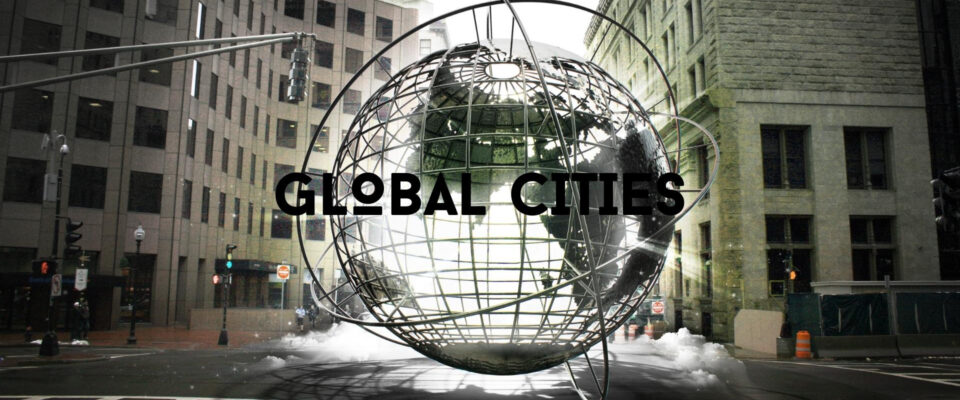Introduction
Although Guangzhou is historically a global city, its status as a global city before reform and opening could be characterized by Guo and Liu’s periodization of “passively open” from Ming to Qing before the First Opium War, “forced open” from late Qing to Republic Guangzhou, “semi-actively open” from liberation to before the reform (Guo and Liu 2012, 66). Starting from the late Qing Dynasty, Guangzhou was what Guo and Liu considered as a passively open city because the city was open to trade under the clause of an unequal Treaty the government signed after losing the Opium War (Guo and Liu 2012, 66). Starting from the independence of the People’s Republic of China (PRC), and up until the reform era in the late 1970s, Guangzhou continued to play its historic role as an open window to foreign trade and culture but with limited capacity. After reform and opening, Guangzhou became a leading Chinese city to modernize and globalize. By entering the global market and opening itself to foreign investment, the city not only passively became one of the nodes in the global trade and financial network but also actively sought to adjust its position within the global network. This literature review seeks to understand Guangzhou’s progression and its association with the status of a global city as well as the current discussion of its deliberate effort in trying to build itself as a global city.
Historical Position
Guangzhou was appointed as the only trading port by the central government during the Qing Dynasty. However, its effort to become a global city was constrained by the central government’s seclusion policy, which was described by Guo and Liu as an “invisible embankment” that was keeping Guangzhou from globalization (Liu and Guo, 64). Moreover, six of the seven ocean trade routes were managed by foreigners instead of the local government. Liu and Guo characterize Guangzhou after the First Opium War (1839-1842) as a “forced open” global city, which both benefited from a growing foreign trade volume, development of light industry, and city construction (e.g., paved roads and railroads), and suffered from a rapidly diminishing traditional industries and the Great Depression of the 1930s (Liu and Guo, 65). Moreover, China’s experience during this period was marked as “semi-colonialization” or “semi-feudalization,” and Guangzhou was at the mercy of the colonists and without support from the central government. The lives and architecture of the urban enclave are captured by John Farris’s Enclave to Urbanity, which documents how the architectural footprints of foreign architecture form modern Guangzhou (Farris 2016).
On the other hand, under foreign influences and the process of environment building, Chinese urban planners became aware of the relationship between urban infrastructure and politics. Zhang examines the symbiotic relationship between street building and city building in Republican Canton (Guangzhou) (Zhang 2017, 153-174). Tsin also argues that Guangzhou’s modernization was closely related to urban planning and scientific thinking of resource management in the city. According to Tsin, for governors, urban planning also became one of the most important means to catch up with the modern West (Tsin 2000, 23-9).
After the establishment of the PRC and before the reform and opening period, Guangzhou became what Guo and Liu characterize as, a “semi-actively open” city (Guo and Liu, 66). Due to the central government’s suspicion towards foreign influence, Guangzhou developed slowly and only conducted trade with the less-developed communist bloc countries. Nevertheless, the opening of the Canton Fair (广交会), or the China Import and Export Fair, which has continued for more than 60 years since 1957, demonstrated Guangzhou’s determination in trying to position itself as a global city (Guo and Liu 2012, 66).

According to Guo and Liu, Guangzhou became an “actively open” city after the economic reform starting from 1978. Guangzhou enjoyed advantages not only from its historical position as a trading city, but also from its geographical location on the Southeast coast and its proximity to Hong Kong. A stream of literature discusses the story of Guangzhou’s rapid economic development and leading role in marketization. Chung compares Guangzhou’s effort to marketize its economy with the case of Tianjin, while Lam analyzes the economic success of Panyu, Nanhai, and the greater metropolitan area of Guangzhou (Chung 1999; Lam 1999). Both reach the conclusion that individual leadership and flexible policies to attract foreign investments played an important role in Guangzhou’s economic success. Moreover, large population inflow, fluidity of population among different towns in the Pearl River Delta, and economic integration and the urban network that was created during this period provided the context for the next stage of Guangzhou’s plan to develop as a global city.
Global City in Action
An examination of official statements and documents published either by the local or the central government reveals a consistent and deliberate effort to build Guangzhou as a global city. According to Guangzhou’s Master Plan (2003), it aimed to build Guangzhou into a “international regional center” as well as an ecological belt that fit into the predominant “global ecological concept” of green and sustainable city at that time (Liang 2014, 37). On the other hand, starting from the reform era, Guangzhou has been working on building the Pearl River Delta economic zone to attract foreign investment (Pan and Cheng, 2011). The Pearl River Delta Reform and Development Plan (2008-2020), which was published by the National Development and Reform Commission of the PRC, suggests that regional planning of the metropolitan or the integration and formation of an intra-metropolitan area in the Pearl River Delta has gained attention on the national level (“Outline,” 2008). In 2019, Guangdong Development and Reform Commission announced the future planning of a Greater Bay Area that involves multiple node cities in Guangdong as well as Macau and Hongkong. The plan not only seeks to revitalize the region’s status as an international trading port, but also plans to encourage human capital mobility and information sharing within the Guangdong-Hong Kong-Macau region and the development of technological creative zones between Guangzhou, Zhuhai, and Macau (The 14th Five-Year-Plan, 2021).
Duality and Polarization
Despite Guangzhou’s rapid economic development and its progress in becoming a global city, social polarization started to increase throughout the 2000s. The dual-track of the residential registration (hukou) system, led to the phenomenon of urban villages in the cities, in which the villagers whose physical location is within the city yet feel displaced and disconnected from the city’s global aspect. There is a stream of literature that examines the transformation of urban villages and the development of adaptation of these urban villages in the context of urbanization as well as Guangzhou’s effort in trying to globalize (Wong 2015; Lin 2011; Liu 2017). Moreover, as Sassen discussed the various forms of informality created in the context of global and dualized cities, Hsing also discusses the formation of informal political actors (village shareholding companies) who played an important role in mediating between the government and the local villagers (Sassen, 46-49; Hsing, 2010).
On the other hand, another stream of literature discusses the process of globalization in the context of social polarization. Timberlake, Wei, Ma, and Hao suggest that Chinese cities’ deliberate effort to build themselves as global cities has led to an increase in inequality in areas such as housing allocation, which could be potentially detrimental to system legitimacy in China (Timberlake and et.al, 2014). Li, Fang, and Xiao, on the other hand, reached the conclusion that social polarization in Guangzhou is less obvious than that of Shanghai and Beijing from 2001 to 2016 because its successful wholesale and manufacturing industry has given opportunities to many middle-income class families (Li and et.al, 2020).
In line with Machimura’s discussion of the cleavage between Tokyo’s image as a “global city” and a “homogenous city,” Guangzhou’s effort to establish itself as a global city also overlooked aspects of diversity and inclusivity. Jin, Bolt, and Hooimeirjer suggest that obstacles created by the government, which made obtaining long-term residence permits difficult, prevented African enclaves in Guangzhou from developing (Jin et.al, 2021). Niu, Lin, Chen, and Li also propose the concept of the “transient neighborhood” regarding African neighborhood in Guangzhou as opposed to the “immigrant” or “transmigrant” neighborhood, because of its flexibility and instability due to the process of globalization and the state’s role (Niu and et.al, 2020). However, the government’s efforts to sabotage African’s effort to establish its own network and enclave should be distinguished from an anti-black racist attitude of the government. Wilczak suggests that the state’s effort should not be considered as having a racial element, but rather one that targets immigrants in general. By examining the urban renewal project, Jessica Wilczak suggests that Guangzhou’s effort in trying to establish itself as a “clean, safe, and orderly,” or a more competitive “global city” is one that is “as much about internal migrants as it is about Africans” (Wilzcak, 2018).
Conclusion
Although Guangzhou is historically a global city, its status of openness, which was summarized by Liu and Guo, changes, and proceeds over time. Starting from the reform era, Guangzhou, like many other Chinese cities, began to deliberately build itself as a global city. In the case of Guangzhou, it seeks to establish its “global city” status by establishing an intra-metropolitan region of the Guangdong-Hong Kong-Macau Greater Bay Area. On the other hand, there are also studies that seek to explain the globalization of Guangzhou in the context of a dualized city, such as social polarization (Li 2020; Timberlake 2014) and the formation of informal actors (Hsing 2010; Wong 2015; Liu, 2017; Lin et al. 2011). Another notable aspect of Guangzhou’s globalization, which could be similar to many of the rising megacities in Asia, such as Tokyo, would be the existing cleavage between its effort in building a “global city” and a “homogenous city” (Machimura; Jin et al. 2021; Niu et al. 2020; Wilzcak 2018). Although Guangzhou has made its way to the status of a global city economically, many problems lie ahead. The real question would be whether Guangzhou can resolve its internal polarization and homogeneity and fully embrace the “global” emblem.
Bibliography
Cheung, Peter T.Y. “Guangzhou and Tianjin: The Struggle for Development in Two Chinese Cities.” In Cities in Post-Mao China. Routledge, 1999.
Farris, Johnathan. Enclave to Urbanity: Canton, Foreigners, and Architecture from the Late Eighteenth to the Early Twentieth Centuries. Hong Kong: University Press, 2016.
Guo, Xiangmin, and Changtao Liu. “Guangzhou’s Special Path to Global City Status.” In Aspects of Urbanization in China, edited by Gregory Bracken, 59–76. Shanghai, Hong Kong, Guangzhou. Amsterdam University Press, 2012. http://www.jstor.org/stable/j.ctt46mzks.8.
Hsing, You-tien. The Great Urban Transformation Politics of Land and Property in China. Oxford ; Oxford University Press, 2010.
Jin, Xin, Gideon Bolt, and P. Hooimeijer. “Africans in Guangzhou: Is the Ethnic Enclave Model Applicable in the Chinese Context?” Cities 117 (October 1, 2021): 103320. https://doi.org/10.1016/j.cities.2021.103320.
Lam, Tao-chui. “Institutional Constraints, Leadership and Development Strategies: Panyu and Nanhai under Reform.” In Cities in Post-Mao China. Routledge, 1999.
Li, Zhifeng, Fang Ying, and Xiao Yang. “Global City Hypotheses and Social Polarization: Empirical Analysis of Beijing, Shanghai, and Guangzhou.” China City Planning Review 29, no. 2 (June 2020): 66–75.
Liang, Samuel Y. Remaking China’s Great Cities: Space and Culture in Urban Housing, Renewal, and Expansion. Asia’s Transformations 43. Abingdon, Oxon: Routledge, 2014.
Lin, Yanliu, Bruno de Meulder, and Shifu Wang. “Understanding the ‘Village in the City’ in Guangzhou: Economic Integration and Development Issue and Their Implications for the Urban Migrant.” Urban Studies 48, no. 16 (2011): 3583–98.
Liu, Zhuojun. Institutional Change in Urbanizing China: A Case Study of Rural Shareholding Cooperatives in Guangzhou. BiblioBazaar, 2017.
Machimura, Takashi. “Symbolic Use of Globalization in Urban Politics in Tokyo.” International Journal of Urban and Regional Research, International Journal of Urban and Regional Research, 22, no. 2 (1998): 183–94. https://doi.org/10.1111/1468-2427.00134.
Niu, Dong, Sainan Lin, Hongsheng Chen, and Zhigang li. “A ‘Transient Neighborhood’: Africans’ Spatial Concentration in Guangzhou, China.” China Review 20 (May 1, 2020): 211–34.
Outline for Pearl River Delta Reform and Development Plan (2008-2020) “珠江三角洲地区改革发展规划纲要(2008-2020).” Development and Planning Commission. http://www.scio.gov.cn/ztk/xwfb/52/9/Document/1057059/1057059.htm.
Pan, Jiun-Nan, and Hui-zhen Cheng. “Determinants of Foreign Direct Investment in China: A Comparative Study among Beijing, Shanghai and Guangdong.” 遠景基金會季刊, November 17, 2011. https://doi.org/10.7063/PQ.200804.0133.
Sassen, Saskia. “Why cities matter.” Catalogue of the 10th International Architecture Exhibition, Venice Biennale (2006): 26-51.
The 14th Five-Year-Plan of People’s Republic of China Economic and Social Development and Prospective of Development in 2035 (中华人民共和国国民经济和社会发展第十四个五年规划和2035年远景目标纲要). State Council, People’s Republic of China. March 13, 2021. http://www.gov.cn/xinwen/2021-03/13/content_5592681.htm.
Timberlake, Michael, Yehua Dennis Wei, Xiulian Ma, and Jianmei Hao. “Global Cities with Chinese Characteristics.” Cities 41 (2014): 162–70. https://doi.org/10.1016/j.cities.2014.02.009.
Tsin, Michael. “Canton Remapped.” In Remaking the Chinese City, edited by Joseph W. Esherick, 19–29. Modernity and National Identity, 1900-1950. University of Hawai’i Press, 1999. http://www.jstor.org/stable/j.ctt6wr0pm.6.
Wilczak, Jessica. “‘Clean, Safe and Orderly’: Migrants, Race and City Image in Global Guangzhou.” Asian and Pacific Migration Journal 27, no. 1 (March 1, 2018): 55–79. https://doi.org/10.1177/0117196818761425.
Wong, Siu Wai. “Land Requisitions and State—Village Power Restructuring in Southern China.” The China Quarterly, no. 224 (2015): 888–908.
Zhu, Jieming. The Transition of China’s Urban Development: From Plan-Controlled to Market-Led. Westport, Conn: Praeger, 1999.

